Marathon fall training is here again, along with those really long, long runs. Your body stores enough glycogen (chained sugar) in your liver and muscles to fuel your run for about 90-120 minutes. After that, your body is forced to find energy elsewhere, and that energy is not as easily converted. You’re forced to walk or stop, and feel like death, as your body converts fat to usable fuel. They call it hitting the wall or bonking. By consuming carbohydrates during your run and staying ahead of glycogen stores, you can avoid this awful predicament. So with that scary note, it’s time to talk about mid-run fuel options.
Note: This post has Amazon affiliate links for some of the fuel options. If you click the link and buy something, I will earn a small commission at no additional cost to you. This helps support the blog and my running. Thank you!
The Basics
You need 25-60 grams of carbs or 100-250 calories per hour after the first hour, depending on your body weight and pace. Scott Jurek recommends between 0.7-1.0 g of carbs for each kg of body weight. And unless it’s a sport drink, you will probably need to consume water along with it. Other than that, you have a lot of mid-run fuel options.
One of those options is processed science-y vs natural. I don’t typically eat a lot of processed foods, so I struggled at first with the idea of eating something called “energy gel”. The gels and other ‘technological’ options are designed to be fast and easy energy for your body. Besides honey, I have struggled to find something natural that doesn’t require a lot of digestive processing to be useful. You may find your body works another way.
Mid-Run Fuel Options
Sports Drinks
Sports drink like Gatorade or Powerade are a familiar choice. Regular Gatorade has 21 g of carbs in a 12 oz serving. I find sports drinks to be a good option for shorter long runs, but I often can’t carry enough to get me through a lengthy run. If you are using this option at a race using aid stations, know that all aid stations may not have a sports drink option, and that it is often not mixed to perfect proportions since it’s being mixed in barrels.
A big benefit of drinks is ease of consumption, just sip as you run. I find this to be a good supplement to accompany other carb-dense foods. I think sports drinks played a pivotal role in my last marathon, boosting my performance. Nuun makes tablets that can be dropped into plain water for added calories.
Gels
A common option at marathon aid stations is gel. Gels are sold in shot packets that you tear open and suck out off like the weird long distance runner you are. Popular brands include Gu, Hammer, and Powerbar. They come in a plethora of flavors with optional caffeine and electrolytes. Honey Stinger is one of my favorites whose base is honey. Huma Chia gel is more natural with chia seeds and fruit, reminding me of apple sauce. Check out a running store near you and find the bookcase full of this stuff.
Gummies
If the slick, sticky sugary gel is not to your taste, you may find gummies more tolerable. Clif Shot Bloks have many options, flavors, enhancements, and are 95% organic. Honey Stinger also makes gummies, which I enjoy primarily for their smaller size. Shot Bloks can be cut into halves to make them more manageable. Even smaller are jelly beans, though. Jelly Belly makes Sportbeans.
Other
Finally, there is the “other” category. I’ve yet to try honey sticks, because I’m afraid they’ll break open during a run. Dates are a good whole food option. If you don’t care about caffeine or electrolytes, you can buy regular jelly beans or gummy bears as a much cheaper option. A lot of people swear by Haribo gummy bears.
Pretzels or crackers are good options as well. I’ve found crackers to be a life saver when my stomach got sloshy from too many gels in my first marathon. But, pretzels and crackers are fragile items to carry on a run. There are also bars and wafers which can be consumed if that’s more your style, but I’ve never managed to wrap my head around chewing and eating things THAT complicated while running a marathon. Beware that you need bars with easy carbs, not fats and proteins.
Practice Makes Perfect
So, that’s a lot of options. And not even all of your options. The most important thing is to PRACTICE. If you’re training for a long distance race that requires fuel, practice your fueling options. Practice eating, practice carrying, and no new flavors for the race.
Even if you plan to bring different fuel, try out what the race will be providing beforehand. That way if you accidentally drop your fuel or something else odd happens, you will know if your body accepts the race’s offerings.
Don’t try new things in the race and find yourself hunkered down in a port-a-potty or doubled over in a ditch with cramps. Don’t do that or hit the wall. Find something that works for you.
Practice.
Further Reading:
- Runner’s World’s Carbs on the Run – short article on figuring out how much fuel to consume, source of carb and calorie range above
- Competitor’s The Wall is Predictable, for Some Runners – MIT came up with a complicated formula on when you may hit the wall
- Competitor’s Eating on the Run – Scott Jurek’s calculated range of carbs to consume and when to aim for the bottom of the range and when to aim for the top

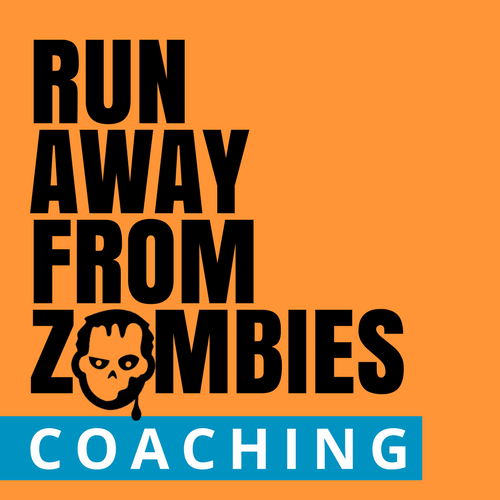

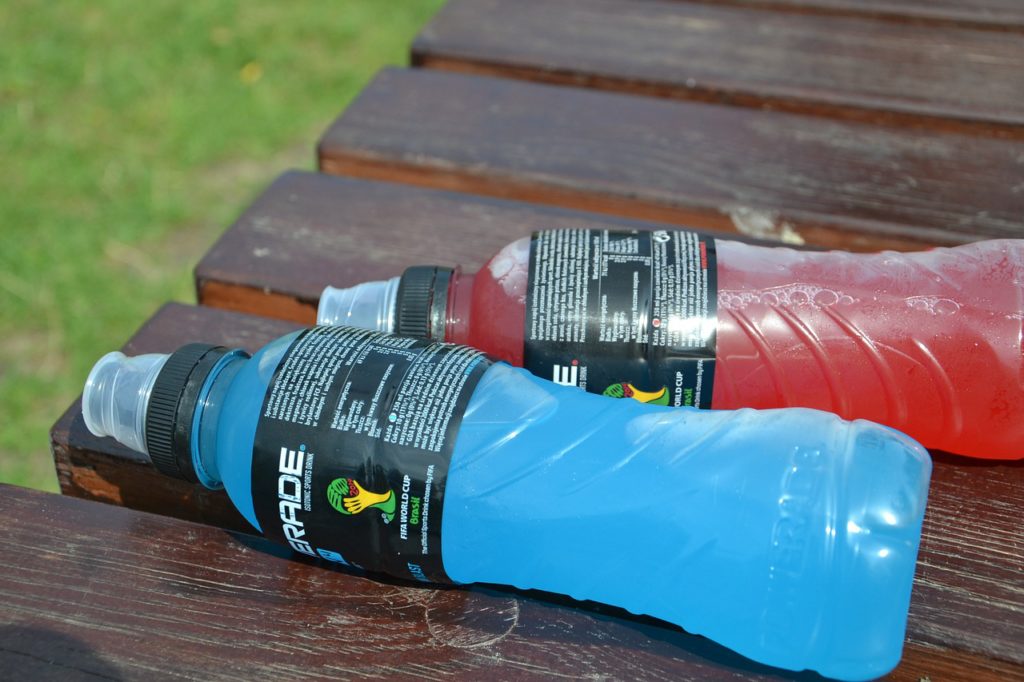
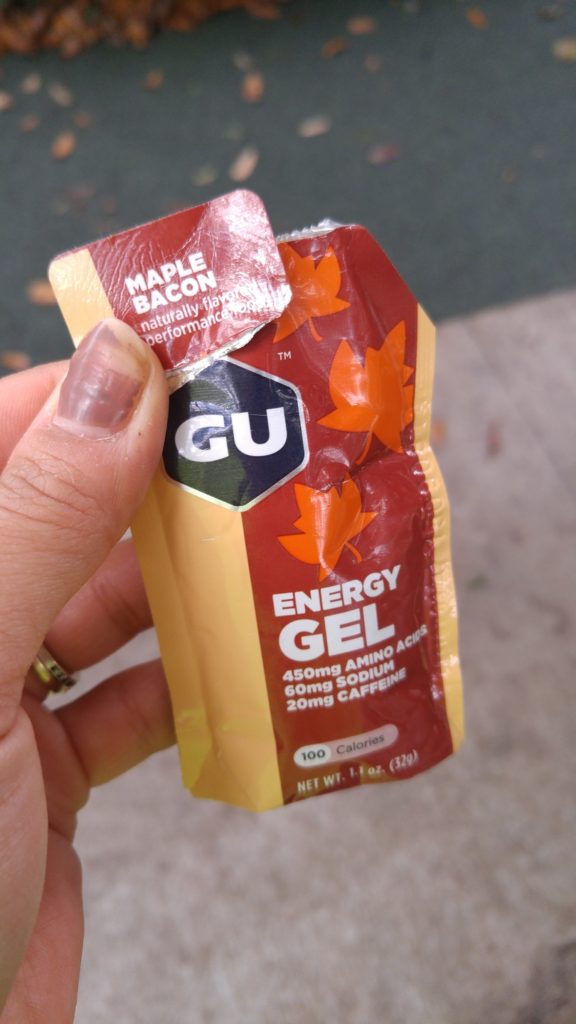
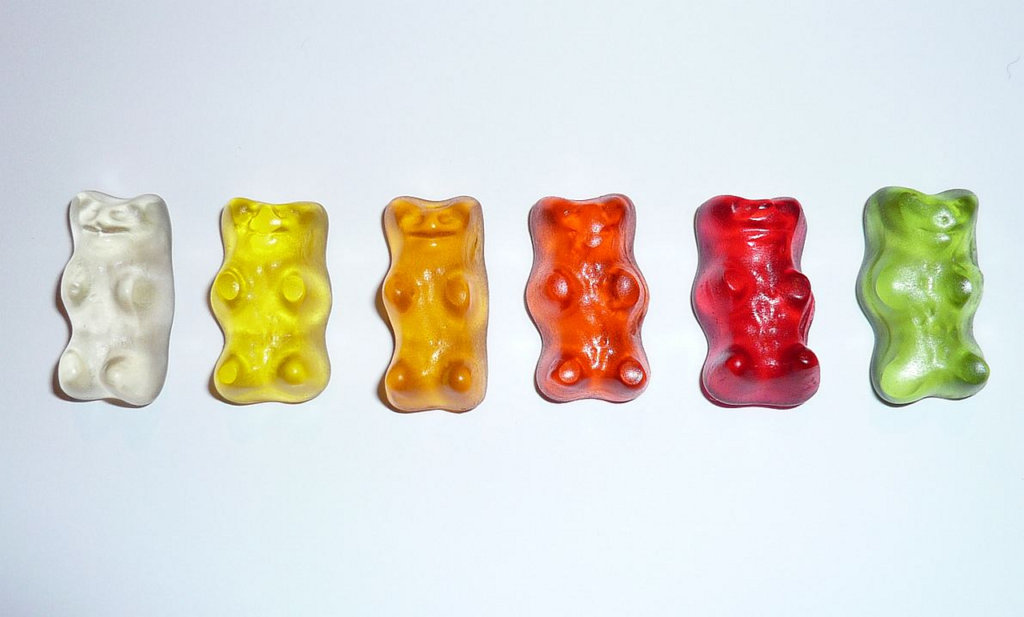
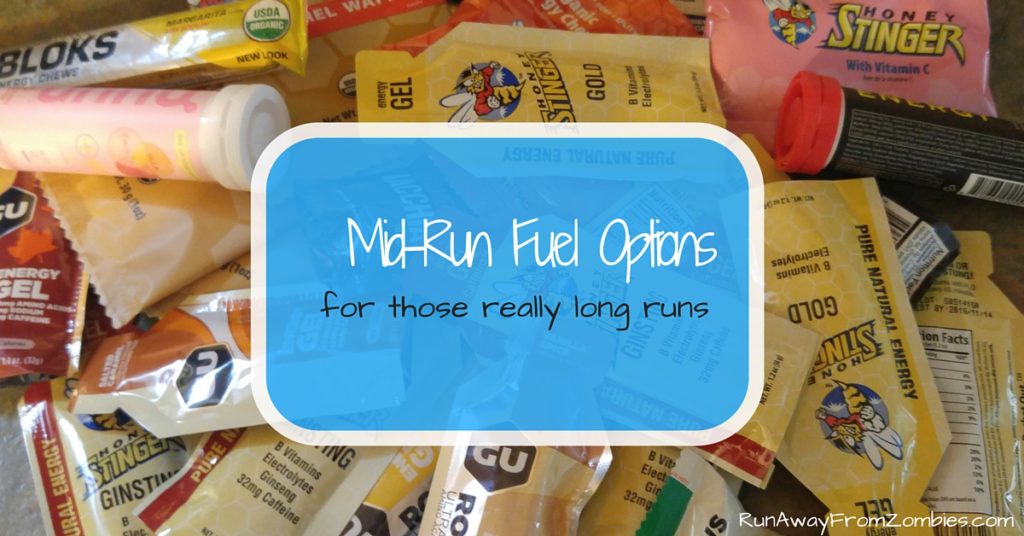


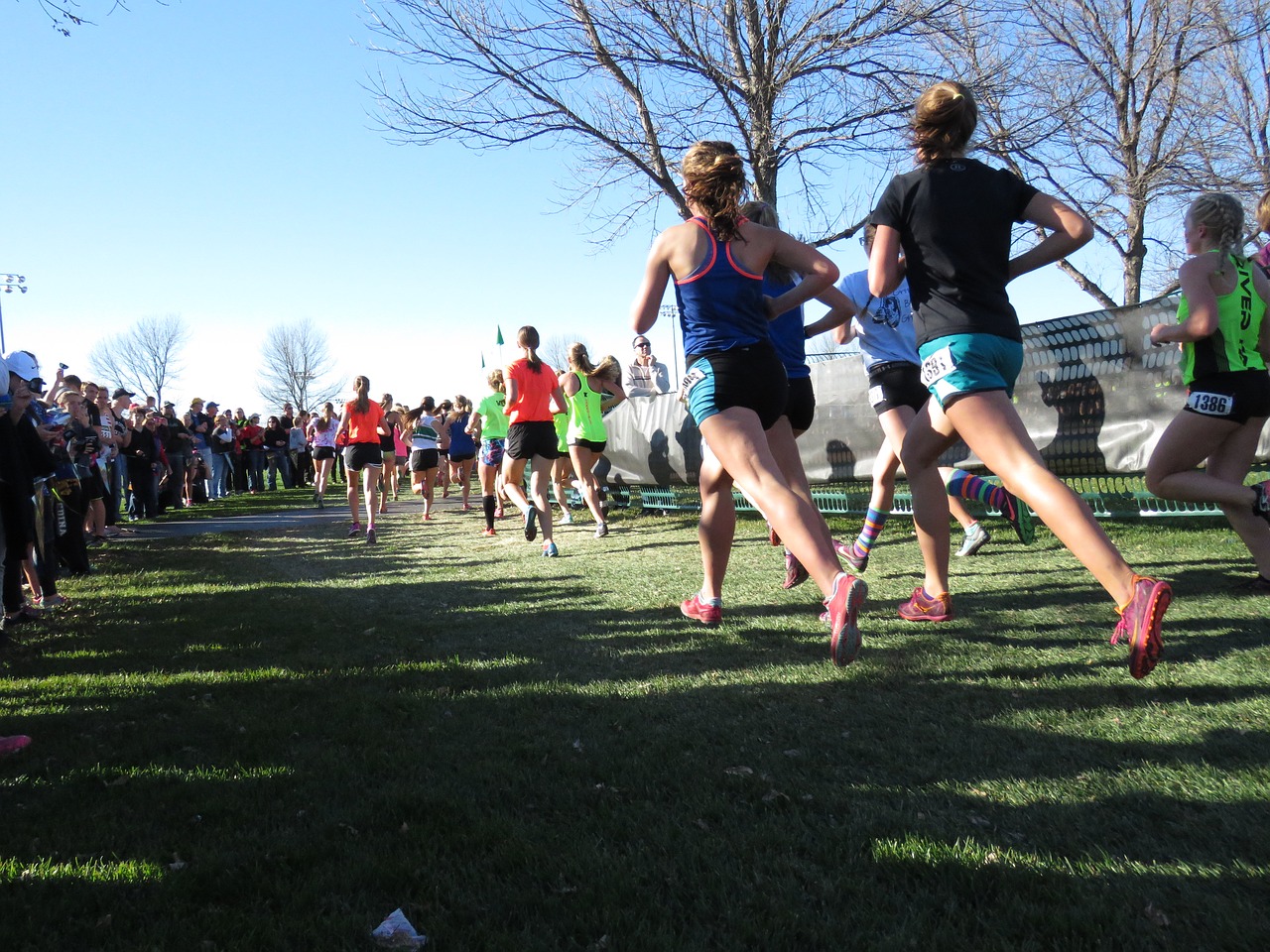
Love all of these– I have never heard of the Haribo gummy bears so excuse me while I use that as en excuse during my next long run!!
Just don’t get the sugar-free kind! There are horror-story reviews on Amazon of their laxative powers.
Nice! Rich and I have signed up for another 1/2 marathon this Fall. I will have to practice using some of these for the run. I use Gatorade and Shot Blocks on the bike but do them less convenient on the run. The smaller chews maybe a better choice for me. As far as the laxative power of sugar free products, that is often due to the sugar alcohols. Sugar alcohols don’t digest in the stomach so they don’t raise blood sugars they then ferment in the intestines often leading to GI issues for some (not all).
Awesome, when is your half marathon?
I don’t think they’re as energy-dense as Shot Bloks, but Honey Stinger’s chews are a nice size. They are about half the size of a Shot Blok and more rounded. They come in large packaging though – I transfer them to smaller baggies for my runs.
Ooh, fermenting sugar alcohols in your intestines! Haha, thanks for the explanation!